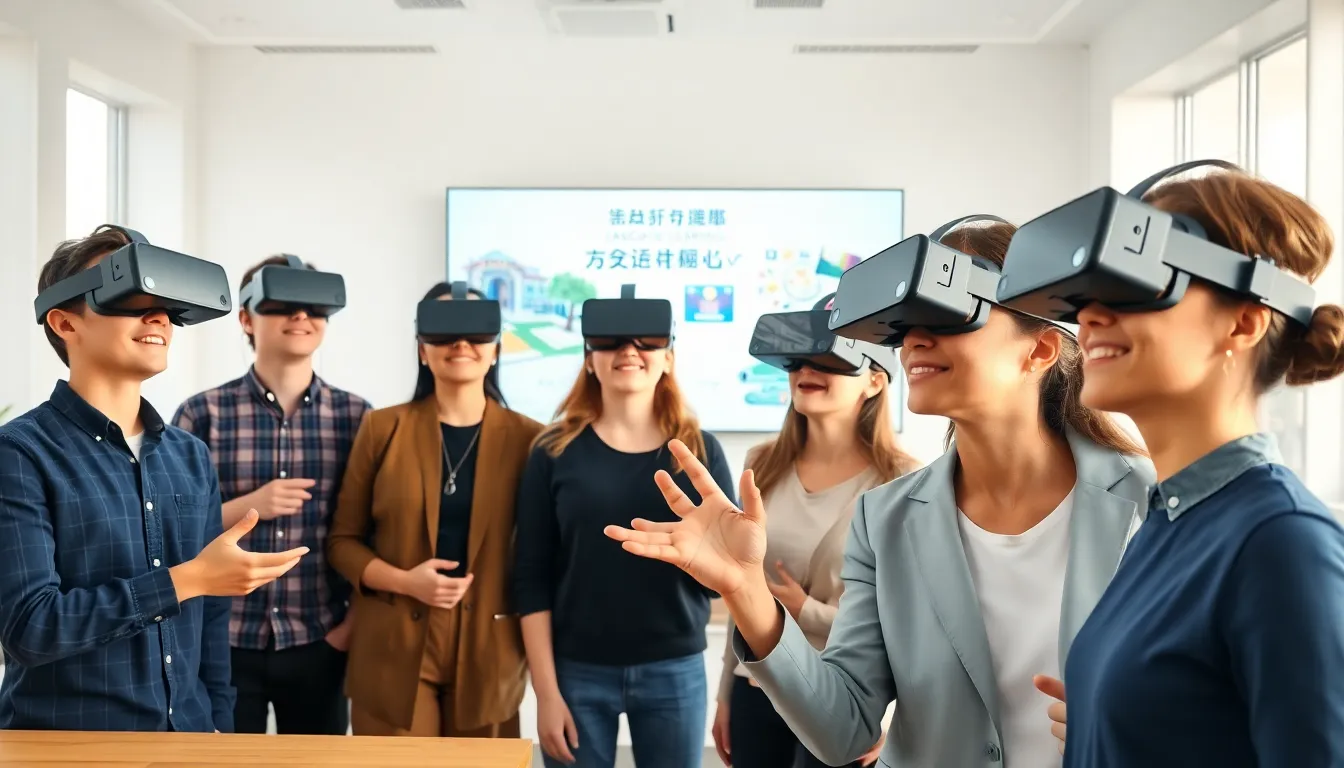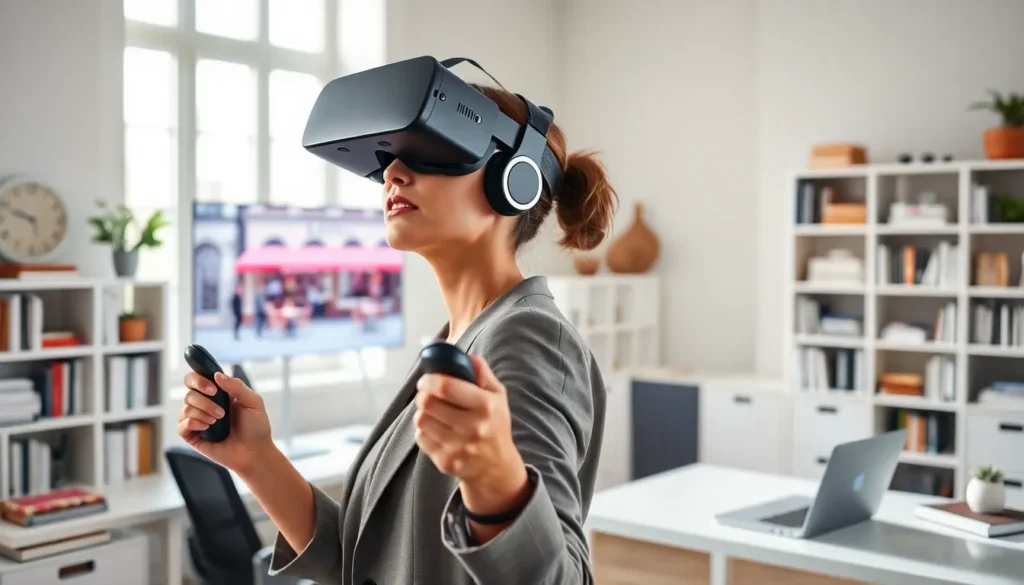Table of Contents
ToggleWhat if learning a new language felt as natural as binge-watching your favorite show? With VR language learning, it actually can. Picture yourself ordering coffee in a bustling Parisian café or negotiating a deal in a Tokyo boardroom, all from the comfort of your living room. This isn’t just some sci-fi fantasy: it’s the future of language acquisition, and it’s already here. As technology evolves, we’re discovering that virtual reality isn’t just for gaming, it’s making waves in the educational sector, transforming how we learn. Ready to jump into this immersive world where languages come to life? Let’s explore.
Understanding VR Technology in Language Learning

Virtual reality (VR) technology employs immersive, computer-generated environments that simulate real-world scenarios. By donning a VR headset, learners can interact with these environments, making them feel as though they’re truly in another place. This sensory experience engages multiple learning styles, appealing to visual and auditory learners alike. Instead of flipping through dull flashcards, students can practice their skills in vibrant settings that challenge their language abilities in context. With VR, the classroom transforms into a lively marketplace, a serene park, or a busy office, wherever the language is spoken, learners can be there. This unique approach not only fosters familiarity with the language but also enhances cultural understanding, something traditional methods often overlook.
The Benefits of VR Language Learning
Immersive Environments for Effective Learning
VR language learning allows students to immerse themselves in authentic linguistic environments. Imagine exploring the streets of Rome, where every storefront sign is a lesson and every conversation is practice. The brain absorbs information more effectively when it’s engaged in real-world contexts rather than rote memorization. This kind of immersive practice enables learners to connect words with real-life experiences, making vocabulary retention easier.
Enhanced Engagement and Motivation
Learning a language can often feel like a chore. Enter VR technology, which gamifies the learning experience, turning it into an adventure. Virtual missions, challenges, and social interactions boost motivation, encouraging learners to stick with difficult concepts. Learners aren’t just passive recipients of information: they’re active participants in their education, which leads to better retention and more enjoyable experiences.
Real-Life Conversation Practice
What’s the hardest part of learning a new language? For many, it’s speaking confidently with native speakers. VR bridges this gap by creating realistic settings where learners can practice with avatars that simulate conversation. This practice prepares learners to handle real-life interactions. With each virtual conversation, learners build confidence, refining their pronunciation and fluency without the fear of real-world repercussions.
Challenges in VR Language Learning
Accessibility and User Experience
While VR technology offers groundbreaking benefits, it’s not without its hurdles. Not everyone has access to high-quality VR headsets or the necessary technology to engage fully. Besides, some users may find navigating these virtual environments challenging due to unfamiliar interfaces. This disparity can lead to uneven learning experiences across different demographics, posing a significant obstacle for widespread adoption.
Balancing Technology With Traditional Learning Methods
Another challenge lies in integrating VR with traditional language learning approaches. It’s easy to get swept up in the excitement of new technology and overlook established methods that have proven effective over time. Striking a balance between using VR and conventional techniques is essential for a holistic learning experience. Educators must find a way to complement traditional coursework with VR without overshadowing it.
The Future of VR Language Learning
Trends and Innovations to Watch
As technology advances, so will VR language learning. Current trends point to increased personalization, where algorithms could tailor experiences based on learners’ strengths and weaknesses. Innovations like multi-user platforms are beginning to emerge, allowing learners from around the world to practice languages together. Also, incorporating Artificial Intelligence into VR environments could lead to even more realistic interactions.
Potential Expansions in Language Programs
Many educational institutions are already recognizing the potential of VR. As more schools begin to incorporate this technology into their curriculum, we can expect a wider variety of language programs. Imagine learning less commonly taught languages in equally immersive environments. This expansion could democratize language learning, making it accessible to more people while fostering a global community of learners.







